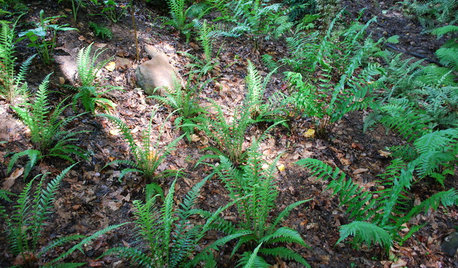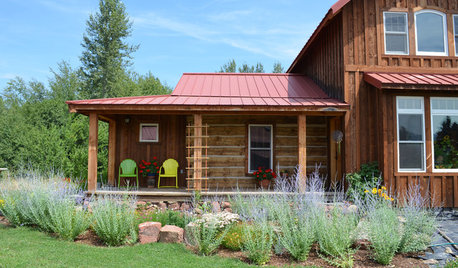Eastern Cottonwood Poplar...weed or tree?
noki
16 years ago
Related Stories

EDIBLE GARDENSNatural Ways to Get Rid of Weeds in Your Garden
Use these techniques to help prevent the spread of weeds and to learn about your soil
Full Story
GARDENING GUIDESPlant Black Cherry Trees for the Birds and Bees
Plant Prunus serotina in the Central and Eastern U.S. for spring flowers, interesting bark and beautiful fall color
Full Story
LANDSCAPE DESIGNThe 7 Best Plant Types for Creating Privacy and How to Use Them
Follow these tips for using different kinds of plants as living privacy screens
Full Story
SAVING WATERHouzz Call: Are You Letting Go of Your Lawn?
Many facing a drought are swapping turf for less thirsty plantings. If you’re one of them, we’d like to hear about it
Full Story
SAVING WATERXeriscape Gardens: How to Get a Beautiful Landscape With Less Water
Conserve water and make gardening much easier with the xeriscape approach’s 7 principles
Full Story
GARDENING FOR BUTTERFLIESBe a Butterfly Savior — Garden for the Monarchs
Keep hope, beauty and kindness alive in the landscape by providing a refuge for these threatened enchanters
Full Story
MATERIALSWoodipedia: Walnut Wows in Traditional and Modern Settings
With its rich color and lustrous polished finish, walnut is a favorite wood for all kinds of millwork
Full Story
GARDENING GUIDESGreat Design Plant: Phegopteris Decursive-Pinnata
Consider Japanese beech fern for a spreading but noninvasive ground cover for shade
Full Story
HOUZZ TOURSMy Houzz: An 1874 Cabin Completes a Rustic Oregon Home
It took 10 years and a hand-hewn log cabin to build this labor of love. See the results of one couple's patience and vision
Full Story






pineresin
lkz5ia
Related Discussions
Eastern Cottonwood Saplings Removed?
Q
Cottonwood
Q
Colorful Colorado cottonwoods (and aspens and ashes)
Q
Cottonwood trees?
Q
entling
Fledgeling_
treeguy123
spruceman
quirkyquercus
nokiOriginal Author
treeguy123
radagast
quirkyquercus
quirkyquercus
spruceman
lkz5ia
greenlarry
ginkgonut
nokiOriginal Author
nokiOriginal Author
john_w
quirkyquercus
lkz5ia
alabamatreehugger 8b SW Alabama
greenlarry
quirkyquercus
lkz5ia
lkz5ia
quirkyquercus
alabamatreehugger 8b SW Alabama
spruceman
treeguy123
quirkyquercus
quirkyquercus
treeguy123
salicaceae
pineresin
alabamatreehugger 8b SW Alabama
Fledgeling_
alabamatreehugger 8b SW Alabama
quercus_macrocarpa
quirkyquercus
spruceman
pineresin
treeguy123
quirkyquercus
treeguy123
salicaceae
pineresin
treeguy123
treeguy123
quirkyquercus